The Saganoseki district in Oita City, Oita Prefecture, has long been a town with a thriving fishing industry. The area faces the Bungo Channel between Oita and Ehime prefectures, and the horse mackerel and mackerel caught there are named “Seki horse mackerel” and “Seki mackerel,” respectively, and are widely known as one of the best brand fish in Japan. What are the roots of “Sekiaji” horse mackerel and “Sekisaba” mackerel, which are born after passing a certain strict control process, and what are the thoughts of the people involved?
Brand-name fish from the Bungo Channel
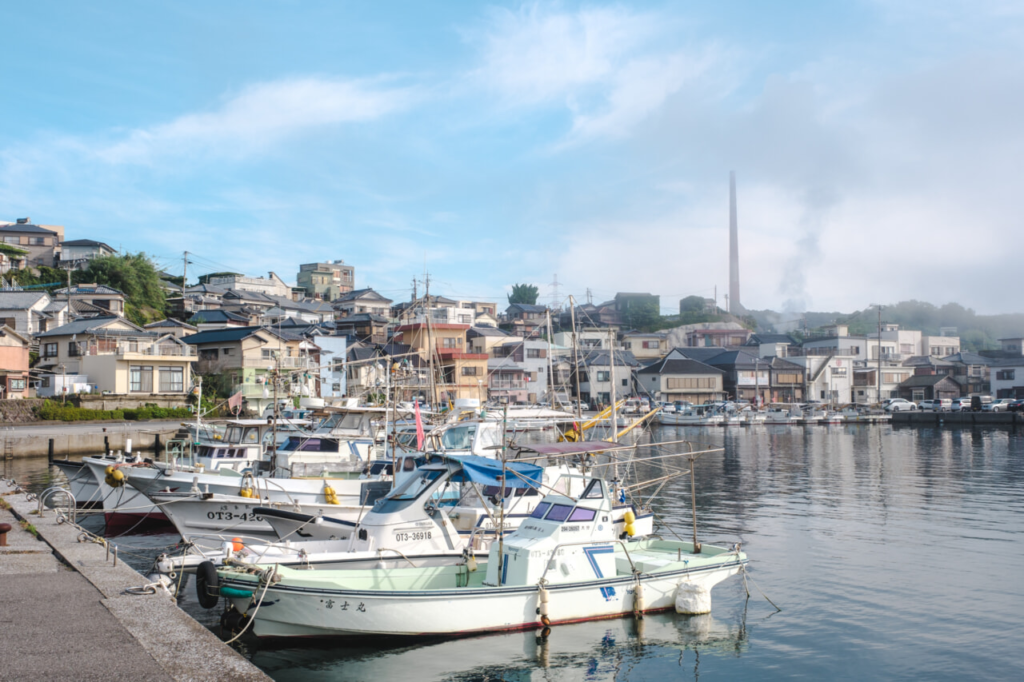
The Bungo Channel, known as one of the best fishing grounds in Japan, is a sea area famous for catching a wide variety of high quality fish. Many fish and shellfish gather here in search of plankton generated by the collision of the nutrient-rich cold water of the Seto Inland Sea and the warm water of the Kuroshio Current from the Pacific Ocean. The area between the Saganoseki Peninsula and Cape Sada in Ehime Prefecture is called “Hayayasu no Seto,” where the tides are particularly swift.
One of the characteristics of horse mackerels and mackerels living there is that they do not mix well with fish from other areas of the sea and form independent schools. Because they grow strong in the swift tides, horse mackerels, for example, grow up to have small heads and fat bodies. Mackerel also have little interaction with other fish, so they contain almost no anisakis, a parasitic worm, and can be eaten raw. This is the origin of the name “Sekiaji” (horse mackerel) and “Sekisaba” (mackerel), which were regarded as exceptional by fishermen.
Rules for becoming a Sekiaji or Sekisaba
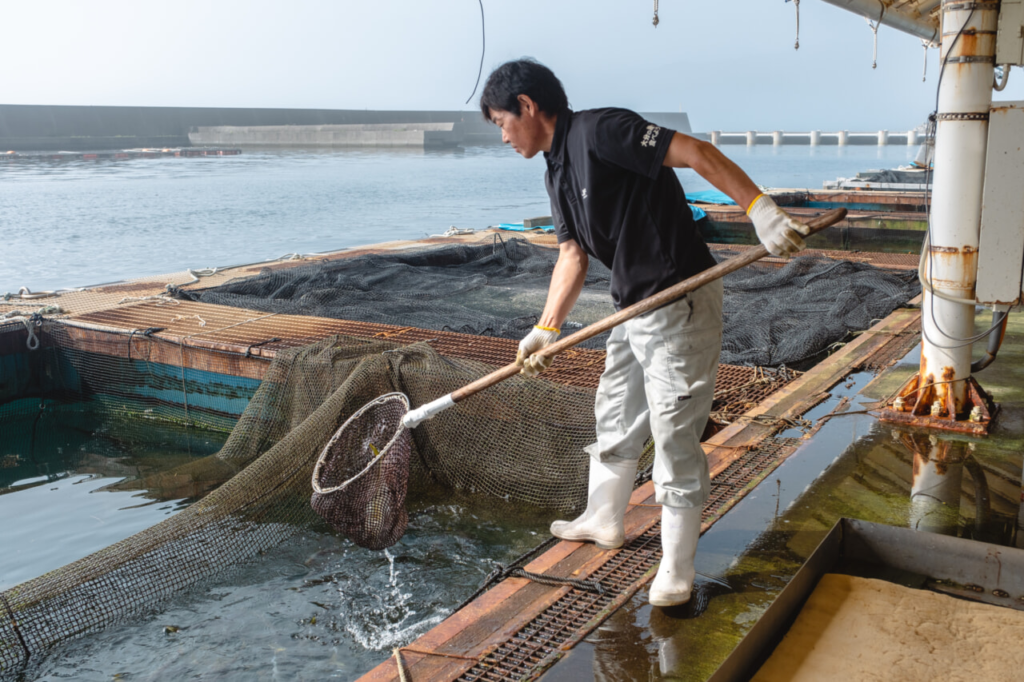
What makes Seki horse mackerel and mackerel different from ordinary fish? It begins with the requirement that the fish be caught only in the “Hayatsuki Seto,” and also with a series of rules that the Saganoseki Branch of the Oita Prefecture Fisheries Cooperative Association has adopted to ensure that the quality and freshness of the fish are maintained. This is true even when it comes to fishing methods. For example, net fishing, which is considered appropriate from the standpoint of efficiency, is not suitable in this region, where the tides are swift. The use of nets causes fish to rub against each other and against the nets, which results in damage to the fish and prevents them from maintaining their quality.
The reason for using “ipponzuri” is not only to ensure the quality of the fish, but also to protect the natural environment of the fishing grounds. The “Hayatsuki Seto” is not a large area, so fishermen do not catch large numbers of fish, but instead share the limited resources among themselves, thereby helping to protect the fishing grounds.
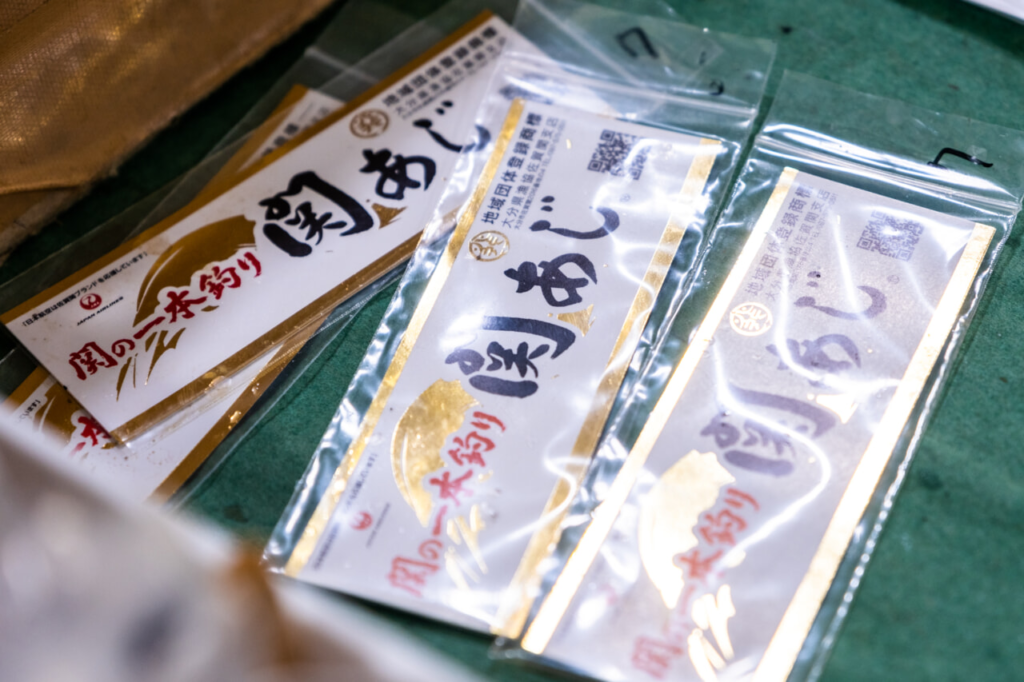
In addition, the fish that have just been caught are in a state of excitement, and if they are placed in the same tank as other fish, they will be harmed. While many people have the common image that “freshly caught fish tastes the best,” the fish are allowed to settle in order to eliminate lactic acid and stress substances, thereby increasing their umami content before being shipped out. Although this involves time-consuming and risky management, it is a process that has been followed for a long time in order to ensure thorough quality control, to maintain freshness, and above all, to deliver delicious fish.
We spare no pains to preserve freshness
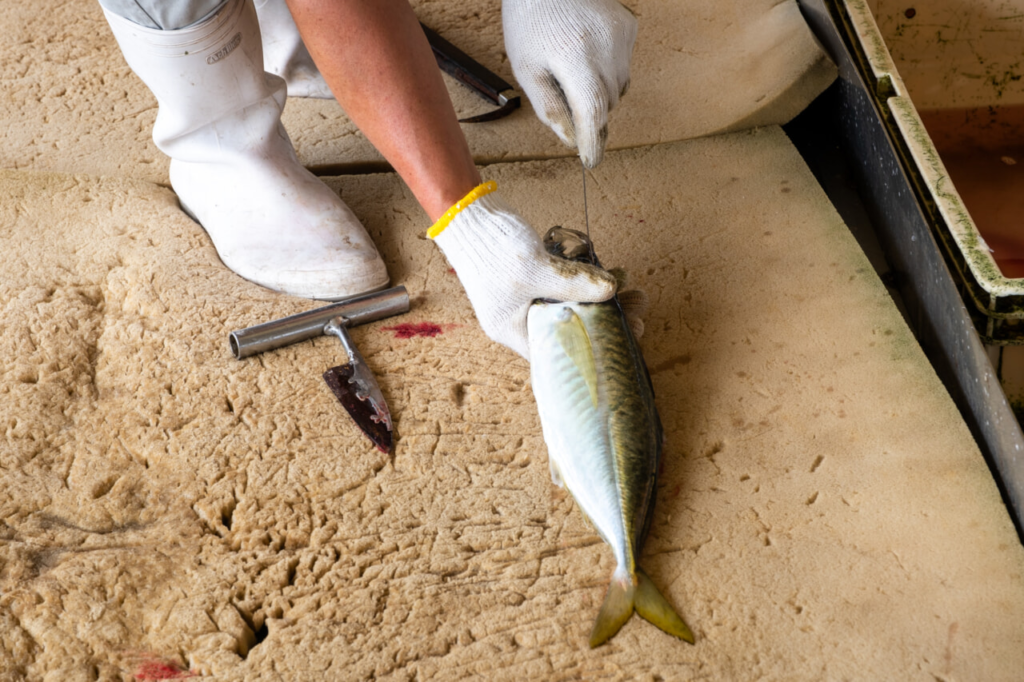
The first step after returning to the fishing port is a process called “Tsurugai,” which is performed only by this fishermen’s cooperative in Japan. In this method, the fish caught by the fishermen are visually identified by the staff of the cooperative as soon as they are scooped into the boat’s fish tank with a ladle, and the fish are counted and priced in 100g increments. The fish are then weighed and purchased from the fishermen. This is a divine technique that can only be performed by staff members who are skilled in the art through their many years of experience. If the same process were to be done by machine, the fish would be severely damaged, and since the number of boats returning to the fishermen’s cooperative at the same time would be concentrated, the waiting time would be longer, further increasing the burden on the fish. All of this is done with the fish’s freshness in mind. After that, the fish must undergo a number of processes to maintain freshness, such as “kikkeshime,” which removes blood from the fish, and “neratori,” which delays rigor mortis for up to 12 hours. The fact that the entire process, from purchase to processing and shipping, is handled by employees of the fishermen’s cooperative, rather than fishermen, is also extremely rare in this industry.
Thus, the fishing grounds, fishing methods, fishermen’s affiliations, and processing methods are all regulated. Behind this was the desire to “stabilize the fishermen’s livelihood” as well as to maintain the quality of the fish.
A brand that continues to protect the fishermen for their livelihood
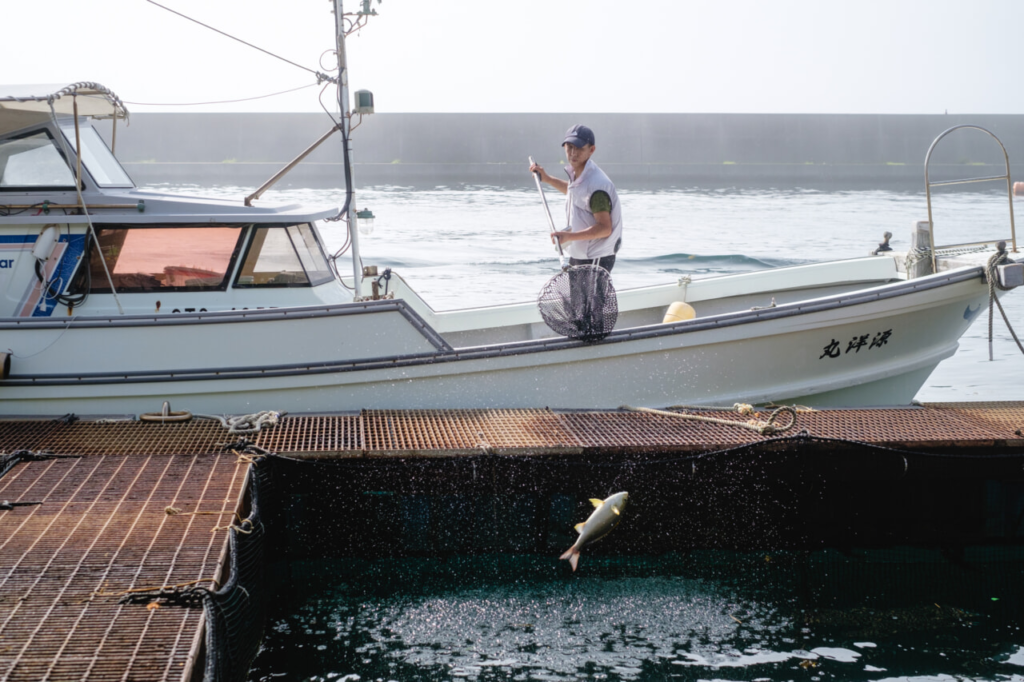
It was around 1990, between the Showa and Heisei eras, that Seki horse mackerel and mackerel were registered as trademarks and branded. The primary reason for the Saganoseki Branch of the Oita Prefecture Fishermen’s Association to go into full-scale business was to protect the livelihood of the fishermen. At that time, fishermen traded directly with local brokers, but prices varied depending on the timing of transactions. This also created problems for the fishermen’s income. They began to feel a sense of crisis that their catch was not being valued fairly, and set about establishing centralized rules to protect the fishermen’s livelihoods and the taste of the fish, as well as to maintain quality. The Sekiaji horse mackerel and Sekisaba mackerel branded in this way became the pioneers of branded fish in the Japanese fishing industry, not to mention their quality and taste.
The Sekiaji and Sekisaba brands were created by our predecessors. Now it is our mission to continue to protect them, and at the same time we are acutely aware of the difficulties involved.” Daisuke Takase of the Saganoseki Branch of the Oita Prefecture Fisheries Cooperative Association says. The introduction of a system that did not exist when the branding was first started has enabled the data to be converted from catch to wholesale, and the quality of the fish has improved dramatically, he says.
Passing on the culture of eating fish raw and connecting it to new successors.
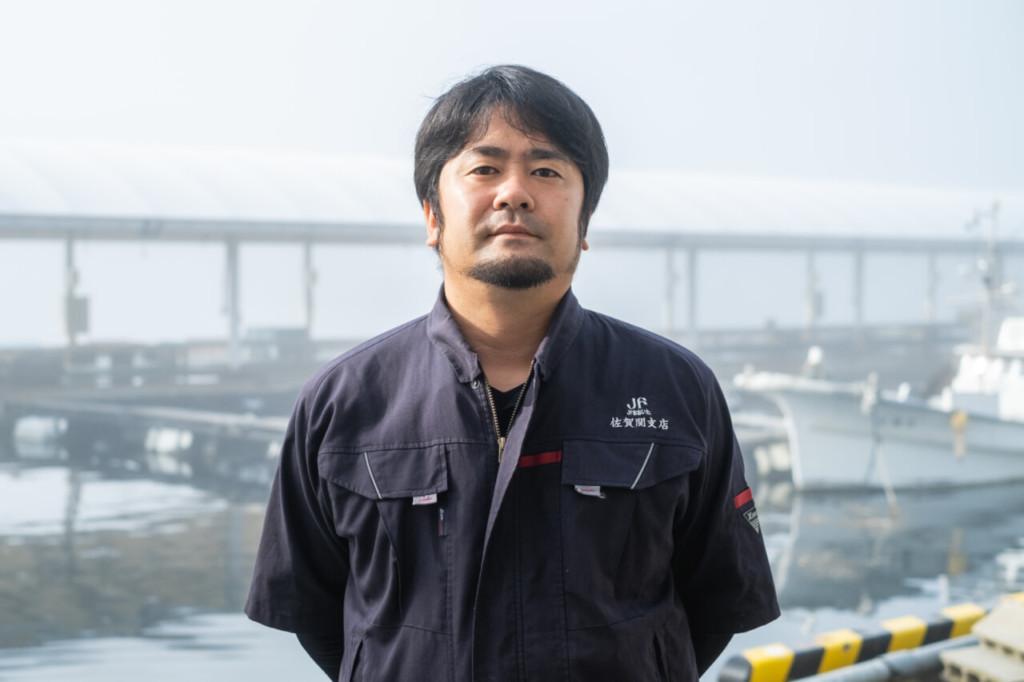
On the other hand, the inevitable and serious issues are poor fishing due to climate change and the aging of the fishermen. Currently, there are approximately 400 fishermen belonging to this fishermen’s cooperative. The average age of the fishermen is 70 years old. Although this is an occupation that allows people to remain active in the sea throughout their lives, we cannot hide our surprise at the high age of the fishermen.
The aging of the population and the lack of successors are major issues not only in the fishing industry in Japan today, but also in agriculture and various other fields. In Japan, the culture of eating fish raw is deeply rooted, and we want people to eat fish raw anywhere in the country. To do so, we must insist on freshness. That should be the case not only for us, but for all fishing villages in Japan, but perhaps it is not being communicated well.” Mr. Takase says it is important to communicate more about the process of creating such brand-name fish, including the feelings of the producers. Simply by delivering tasty fish and increasing the number of people eating fish, we can give back to the producers. He went on to say that if the culture of eating fish in Japan could be rekindled, it would help solve the shortage of successors.
The taste produced by risking life and limb to fish, and the desire to deliver it
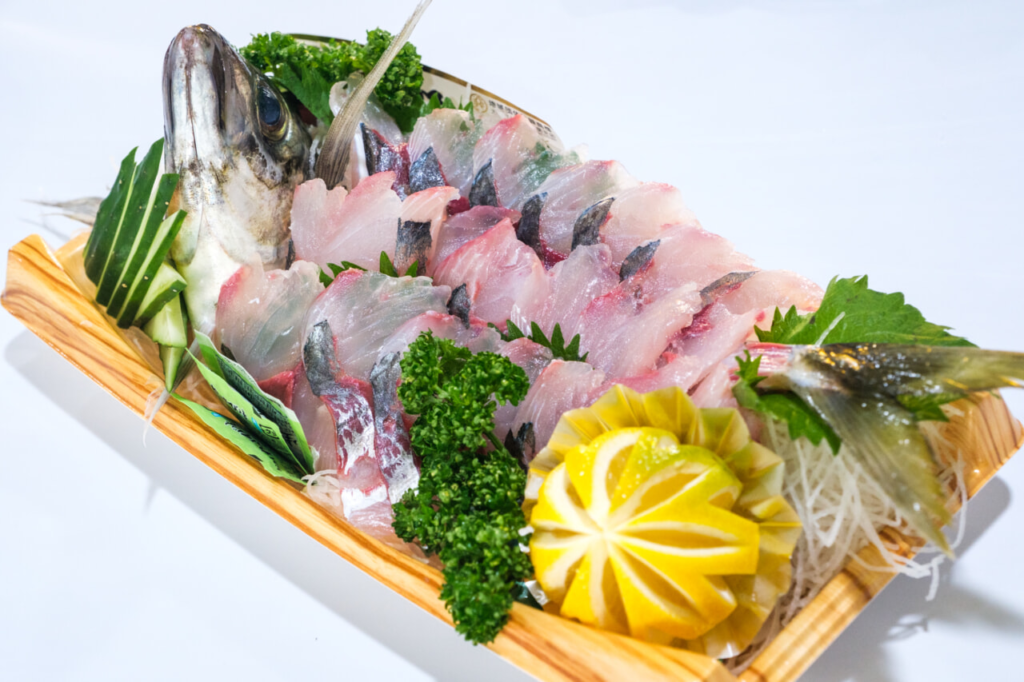
When you taste Seki horse mackerel or mackerel, there is none of the fish’s inherent odor, but rather a clear flavor with firm flesh elasticity and sweetness. This may sound exaggerated, but many people may overturn their previous concepts of horse mackerel and mackerel. This delicious taste is the result of efforts produced through thorough quality control and unique rules. Behind the scenes, Mr. Takase says, one must not forget the fishermen who put their lives on the line to protect this flavor. Ippon fishing is a one-man operation. Although there are many risks involved, the fishermen and everyone who works for the cooperative has a sense of mission to “deliver the best possible product to the customer” engraved in their hearts.

“It tastes best when eaten raw.”
Although it is difficult to make a general statement depending on the region and fishing method, the price of Seki horse mackerel and mackerel is two to five times higher than that of commonly available horse mackerel and mackerel. The delicious taste that cannot be replaced by the price, the reliable quality, and the pride of the fishermen are the reasons why they have been loved by many people for more than 30 years since their birth.
The possibilities of Oita’s pride, Sekiaji and Seki Saba, will continue to expand endlessly while preserving and evolving its history.



